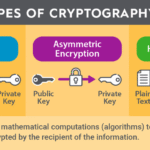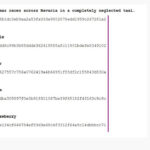In our increasingly digitized world, the notion of hidden information has captivated the attention of both enthusiasts and experts alike. The phenomenon of encrypted data concealing itself in plain sight is particularly intriguing, as it raises questions about security, privacy, and the implications of hidden communication. This article aims to delve into the various methods of finding encrypted data that may be present in seemingly innocuous locations, while also examining the psychological and societal factors that underlie this fascination.
The traditional perception of encryption often equates it with clandestine activities or sinister motives. However, encryption is fundamentally a technique for securing information, ensuring that only authorized individuals can access sensitive data. This security measure manifests in several forms, from simple passcodes to advanced cryptographic algorithms. Nevertheless, the challenge lies in discerning the presence of cryptography lurking beneath the surface of everyday communications, files, and even commonplace digital artifacts.
To embark on a quest to find encrypted data, one must first understand the environments in which such data may be nestled. It is not merely in the obvious locations—like locked documents or password-protected files—where encrypted information can reside. Instead, there are myriad places where data may be encrypted yet camouflaged among ordinary data formats. Spreadsheets, images, and even audio files can serve as vessels for concealed information. Thus, a thorough investigation requires a diverse approach encompassing various file types and sources.
One foundational aspect of locating encrypted data is thorough metadata analysis. Metadata can unveil a plethora of information about a file that is not immediately visible. For instance, digital photographs contain metadata that can include geographic location data, camera specifications, and even the editing history of the image. Upon closer examination of this metadata, it may reveal inconsistencies or hints of encryption—such as unusually large file sizes or unusual file types—that warrant further scrutiny.
After grasping the importance of metadata, one must also employ specialized tools designed for data recovery and forensic analysis. Tools such as Wireshark, FTK Imager, and EnCase can aid in parsing through digital clutter, identifying anomalies that could indicate the presence of encryption. These applications allow individuals to dissect files, scrutinizing their structure and detecting encrypted fragments that may otherwise go unnoticed. The key to effective usage of such tools lies in understanding the intricacies of file systems and the varying layers of data stored within them.
Moreover, pay attention to steganography—the art of hiding information within non-secret text or data. This tactic is frequently used to secure messages or files by embedding them within larger, more innocuous entities. A common example is concealing a text message within an image file. By manipulating the least significant bits of pixel data, clandestine actors can hide a message within a seemingly ordinary image. Identifying such hidden communications necessitates the use of steganalysis software, which can detect discrepancies within file structures indicative of hidden data.
Encryption can also take the form of network traffic disguises. For instance, malware can communicate with command-and-control servers via encrypted channels, blending in with standard traffic to avoid detection. Monitoring network traffic patterns is crucial in uncovering such malicious activities. Intrusion detection systems (IDS) equipped with anomaly detection capabilities can help in recognizing unusual traffic patterns that might be indicative of hidden encrypted communications. Thorough logging and analysis of network behaviors serve as an essential line of defense against such encryption-based stealth tactics.
Equally significant is the role of human behavior and psychology in the pursuit of hidden data. The allure of the ‘forbidden’ often drives individuals toward discovering information that was never intended for them. This curiosity can manifest in various motives—ranging from benign attempts to unveil secrets for academic or investigative purposes to malicious intentions aimed at exploiting vulnerabilities. Consequently, one must approach the search for encrypted data with both ethical considerations and a clear understanding of legal boundaries. The misappropriation of hidden data can lead to severe legal ramifications, reinforcing the need for responsible practices.
As technology evolves, so too do the methods employed for encoding data. Sophisticated algorithms are continuously developed, boasting increasingly complex encryption techniques that require equally advanced decryption approaches. The challenge for cryptographers and data analysts is to stay abreast of evolving trends in cybersecurity. Engaging in ongoing education and collaboration within cybersecurity communities can yield invaluable insights into both emerging threats and effective countermeasures.
Ultimately, finding encrypted data hidden in plain sight is both an art and a science. It necessitates a multifaceted approach, incorporating analytical skills, investigative techniques, and ethical considerations. From thorough metadata analysis to understanding the nuances of steganography and encryption algorithms, individuals must be equipped with a diverse set of tools to navigate the intricate landscape of hidden information. This ongoing exploration is not merely an endeavor of curiosity; it serves as a vital component in the broader narrative of digital security and privacy, reflecting our collective commitment to safeguarding information in an era marked by rapid technological advancement.









Leave a Comment